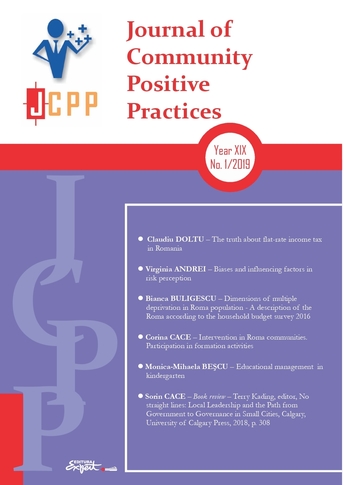Intervention in Roma communities. Participation in formation activities
Abstract
The study developed within an integrated program follows the actions carried out on the labour market for the employment of the Roma population. Are these measures effective and respond to the needs of the Roma population or the lack of adequacy to the specifics of the population leads to poor results? Data collection methodology included face-to-face questionnaire interviews with predefined questions, administrated by trained field operators. A total of 1064 questionnaires with Roma people were also collected. The marginalised Roma persons have been selected using the “snowball” method (we started from the town hall; if we had no success with the town hall, we approached the next institutions that might supply such information, for instance, the church, health care unit, police, school etc.). A percent of 13% of the respondents declared that they attended professional training courses after having graduated the school. The respondents who attended training courses after having graduated the school, attended training courses in mechanics and plumbing (26%), in constructions (16%), catering and services (14%), counselling and formation (12%). Less than 10% of these respondents attended training courses in other areas.

